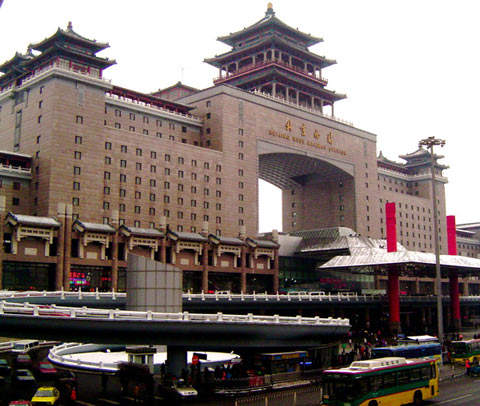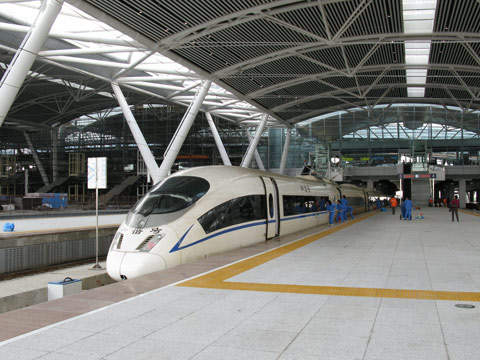Built on 51ha and measuring 510,000m², Beijing West was the largest railway station in Asia until 1 August 2008, when Beijing South was officially opened.
Beijing West is located in western Beijing’s Fengtai district and is situated south of Beijing World Art Musuem and China Central Television station. It was reconstructed on a previous station site.
Although Beijing West was operational from October 1995 it officially opened in 1996 following three years of construction. It was expanded in 2000 to facilitate large parking lots and to ease passenger traffic at the station.
Beijing West Railway Station is one of the city’s four railway stations, the others being Beijing East, Beijing South and Beijing Central. It is a transportation hub for the 100,000 passengers who pass through the station every day.
Beijing West infrastructure
Beijing West is a modern and well maintained station, which houses several restaurants, fruit stalls, gift shops and confectionary outlets that are open until late at night. Its other facilities include a post office, bank, first aid station and telephone booths.
The station building is 98ft high and has ten platforms. The main entrance to the station is Lianhuachi Hu gate. It has two plazas to the front – the new Southern Square near Lianhuachi Park and Northern Square.
Tickets and entrance pass sales counters are available at Northern Square and Southern Square.
Southern Square opened in January 2010 following completion of the building’s renovation, which included transforming the 11th floor into a waiting room and improving the flooring. This area was previously occupied by Jingtie Hotel. The hotel lobby was converted into the east ticket hall and has 12 ticket counters.
Southern Square is expected to divert about one third of passenger traffic from Northern Square. Passengers can now go directly to the train station hall from the Southern entrance. Previously, passengers had to come in from Northern Square and take an underground tunnel to reach the main train station.
Luggage can be checked in at the east wing and picked up from the west wing of Northern Square.
Passengers holding sleeper tickets can wait in the waiting rooms at the east side of the entrance hall on the second floor. A special waiting room, T27, is solely for the use of passengers travelling to Lhasa in Tibet.
The International Ticket office is centrally located on the first floor of the building.
Lower level 2 of the station has two exits: North Exit 1 in the east and North Exit 2 in the west.
Lines and routes
Beijing West station is the starting point for the trains to Changsha, Chengdu, Chongqing, Fuzhou, Guangzhou, Guilin, Guiyang, Hohhot, Hong Kong, Jinan, Nanchang, Nanning, Shenzhen, Shijiazhuang, Taiyuan, Tibet, Urumqi, Vietnam, Wuhan, Xiamen, Xi An, Xining, Kunming and Zhengzhou.
The famous Jingjiu Railway Line, which connects Beijing to Kowloon, also begins at this station.
It has a modernised underground rail network that will be connected to Subway Line 9, on which services are expected to start in late 2012. Subway Line 7 is scheduled to be completed in 2014.
Rolling stock
There are eight types of trains that pass through Beijing West:
- A is a four-digit train that has a green body and travels at low speed
- K trains have an orange body and runs at a very fast speed
- T trains and N trains are known as the super-fast or express trains
- Z trains are super-fast, sleeper-class trains and have limited stops
- D trains are bullet trains, the fastest of the rolling stock
- C trains are the inter-city trains that travel between Beijing and Tianjin
- Y trains are tourist trains
- L trains are temporary trains, which are added to the fleet to meet increasing traffic during peak periods such as national holidays and festivals.










